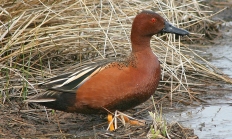Hunters play key role in CWD testing: Reminder to stop at CWD Check Stations (in Baker City, Celilo Park, Elgin, Prineville, Riley, Ukiah)
SALEM, Ore.—As 2025 deer and elk hunting seasons begin, ODFW is ramping up its Chronic Wasting Disease (CWD) surveillance statewide. Hunters are encouraged to take advantage of streamlined testing options and reminded that CWD check stations are mandatory to stop at when transporting harvested deer…






